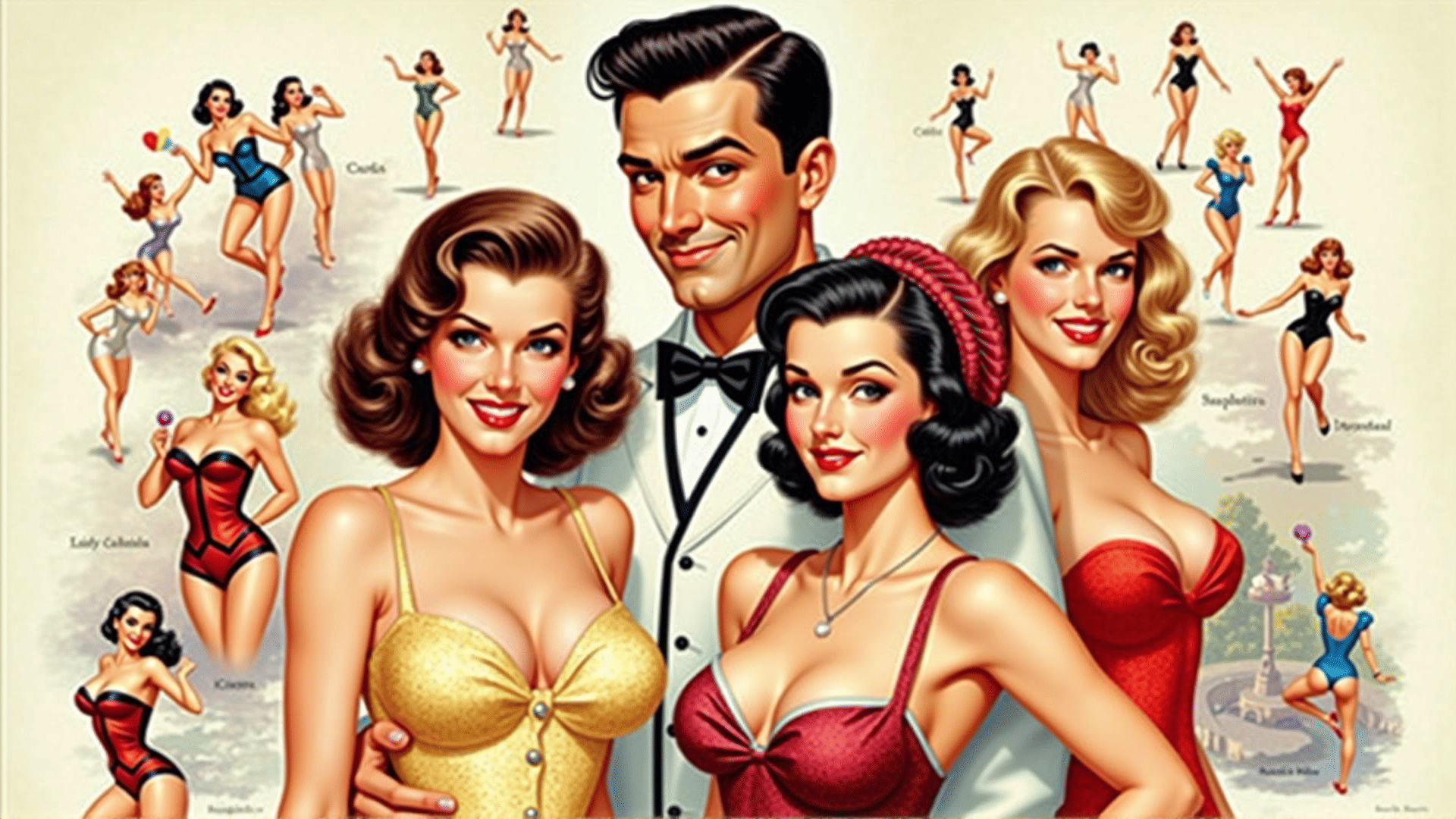Pin-up art, a cultural staple that blossomed in the early to mid-20th century, remains an influential art form that continues to inspire contemporary designs. At its zenith, it combined elements of glamour, allure, and whimsy, creating images that were both artistic and provocative. The illustrators behind these iconic images not only captivated audiences with their unique styles but also made significant contributions to the art world. Here, we explore the lives and works of some of the most famous pin-up illustrators who left an indelible mark on modern illustration.
1. Gil Elvgren
One cannot discuss pin-up art without mentioning Gil Elvgren, a master of the genre known for his exquisite draftsmanship and playful subjects. Born in 1914, Elvgren studied at the American Academy of Art in Chicago, where he began refining his skills in commercial art. His pin-ups, distinguished by their vibrant color palettes and wholesome, yet coquettish figures, graced advertisements, calendars, and various publications. Elvgren's ability to blend realism with fantasy made his works particularly enchanting, and his influence can be seen in modern depictions of the idealized figure.
2. Alberto Vargas
Peruvian-born Alberto Vargas earned acclaim for his sensuous and sophisticated portrayals of the female form. Initially gaining fame with the Ziegfeld Follies, Vargas's work came to epitomize elegance and glamour during World War II, when his "Vargas Girls" were published in Esquire magazine. His use of airbrush techniques and soft watercolor hues set his illustrations apart, opting for a delicate and ethereal approach compared to the bold pin-ups of his contemporaries. Vargas’s legacy remains a touchstone in both fashion and art circles today.
3. George Petty
Innovative and humorous, George Petty captured the spirit of the 1930s and 1940s through his distinctive pin-up style. His "Petty Girls," made famous through their appearances in Esquire, combined humor with seduction, often depicting women in playful narratives and exaggerated poses. Petty, an early adopter of airbrushing, utilized this technique to create smooth, refined textures that enhanced the charm of his illustrations. His work not only captivated servicemen during WWII but also influenced advertising and the representation of the American woman in media.
4. Rolf Armstrong
Rolf Armstrong’s vibrant and dynamic pin-ups were a cornerstone in defining the allure of 1920s and 1930s glamour. A New York-based artist, Armstrong drew inspiration from vaudeville and theater, bringing an air of drama and expression to his work. He skillfully combined pastels and charcoals to construct lively, radiant portraits that emphasized the vitality and expression of his subjects. His portraits were highly sought after for magazine covers and advertisements, and his dramatic style continues to influence modern portraiture.
5. Joyce Ballantyne
A rare female voice in a predominantly male field, Joyce Ballantyne brought a fresh perspective to pin-up art. Trained at the Art Institute of Chicago, Ballantyne worked on both advertising and calendar illustrations, leaving a significant mark with her bold and approachable depictions. One of her iconic contributions was the famous illustration of the Coppertone Girl in 1959, a playful image that has become ingrained in popular culture. Ballantyne’s work pushed boundaries and expanded the scope of pin-up art.
These illustrators, each with their unique flair, helped define the golden era of pin-up art, leaving an enduring impact on how beauty and femininity are illustrated in various creative fields. Their contributions laid the groundwork for countless design and art movements, with their charming, innovative depictions continuing to inspire artists and designers to this day. Whether rendered in the bold lines of Gil Elvgren or the ethereal touch of Alberto Vargas, the legacy of these artists illustrates the timeless allure and endless possibilities within pin-up art.
